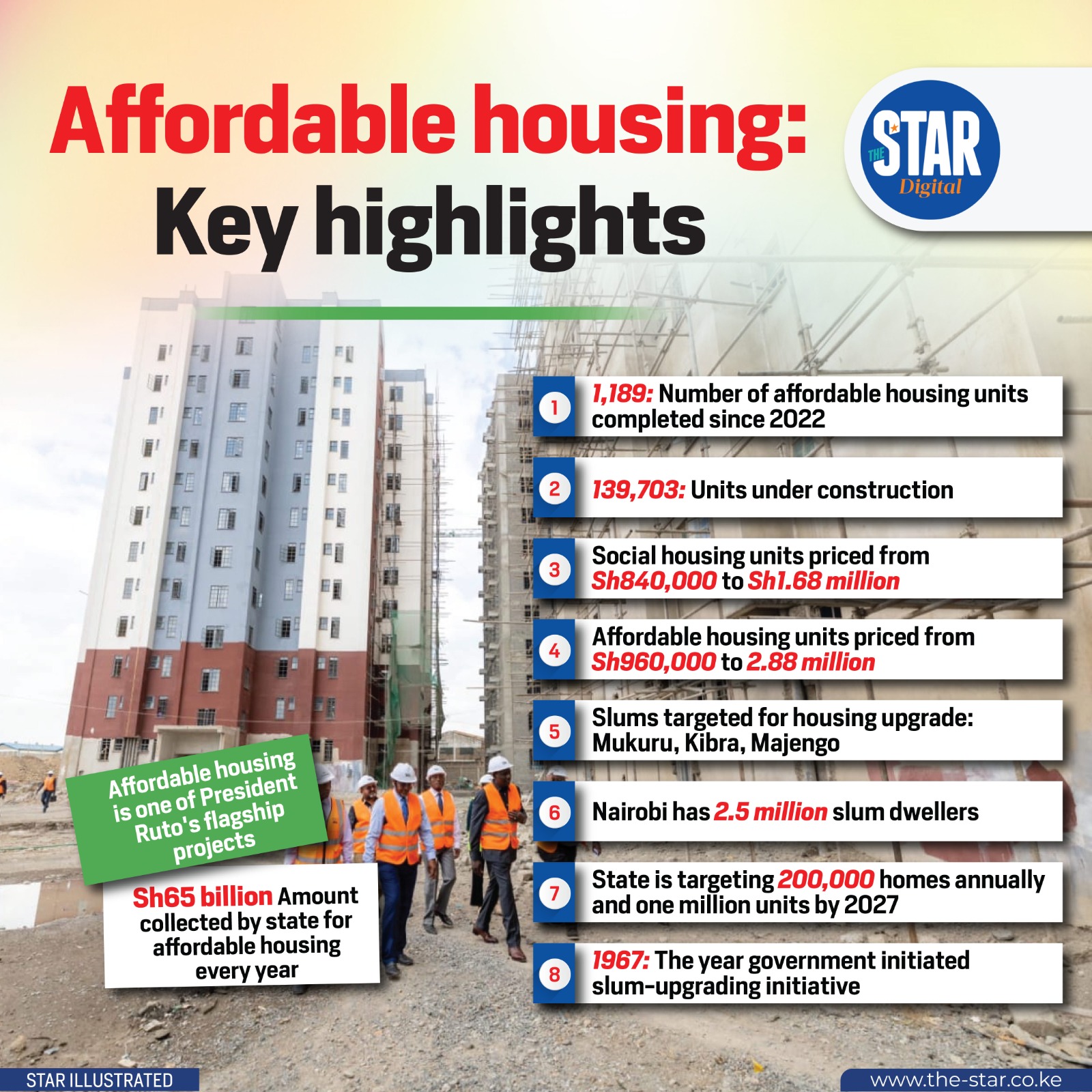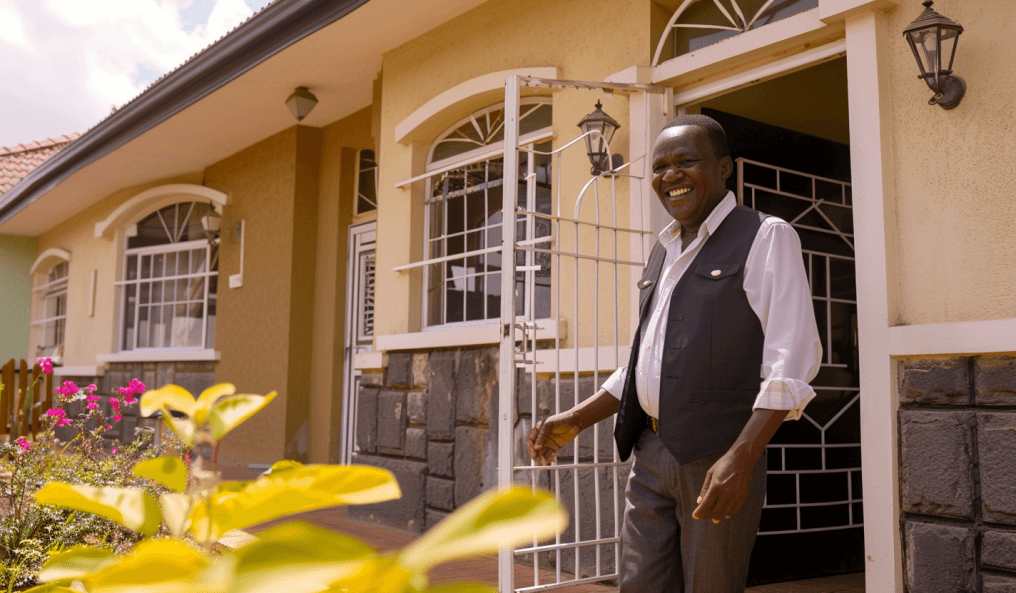Affordable housing remains a cornerstone of Kenya’s development agenda, particularly under the Kenya Kwanza government's Bottom-Up Economic Transformation Agenda (BETA). With a rapidly growing urban population and a significant housing deficit, the challenge of providing decent, affordable homes is immense. As we navigate 2025, the affordable housing sector presents both significant opportunities for investors and developers, and persistent challenges that require innovative solutions. This blog post delves into the current state, progress, and future outlook of affordable housing in Kenya.
1. The Housing Deficit in Kenya: A Persistent Challenge
Kenya faces an estimated annual housing deficit of over 200,000 units, with only about 50,000 new units built annually. A significant portion of the population, especially in urban areas, resides in informal settlements, highlighting the dire need for dignified and affordable shelter. This deficit is exacerbated by factors such as high construction costs, expensive land, limited access to affordable financing, and slow uptake of new building technologies. Addressing this gap is not just a social imperative but also an economic opportunity.
2. Government Initiatives: The Kenya Kwanza Blueprint
The Kenya Kwanza administration has prioritized affordable housing, aiming to deliver 250,000 units annually. Key initiatives and policy frameworks driving this agenda include:
- The Housing Levy: A compulsory deduction from salaried Kenyans, ring-fenced to fund affordable housing projects. While initially met with resistance, its passage aims to provide a sustainable funding mechanism.
- Kenya Mortgage Refinancing Company (KMRC): KMRC continues to play a pivotal role in increasing liquidity in the mortgage market by refinancing home loans from primary mortgage lenders. This makes mortgages more accessible and affordable for low and middle-income earners. The recent increase in their mortgage limit to KES 10.5 million further broadens accessibility.
- Public-Private Partnerships (PPPs): The government is actively seeking collaborations with private developers to leverage their expertise and capital. This model is seen as crucial for scaling up construction.
- Land Reforms: Efforts to streamline land registration and titling processes are aimed at reducing costs and increasing efficiency in land acquisition for affordable housing projects.
- Infrastructure Development: Investment in supporting infrastructure (roads, water, sewerage) in areas designated for affordable housing projects is critical to making them viable and attractive.
These initiatives form the backbone of the government's strategy to bridge the housing gap in 2025 and beyond.
3. Opportunities for Investors and Developers in 2025
The affordable housing sector offers compelling opportunities:
- Guaranteed Demand: The massive housing deficit ensures a strong and consistent demand for affordable units.
- Government Support: Policy incentives, tax breaks (e.g., for developers building affordable homes), and infrastructure support reduce the cost and risk for developers.
- Access to Financing: KMRC and other government-backed funds offer developers access to patient capital at competitive rates.
- Technological Adoption: Opportunities exist for developers to introduce innovative, cost-effective construction technologies (e.g., prefabrication, alternative building materials) that reduce build times and costs.
- Urban Regeneration: Projects focused on upgrading informal settlements into planned, affordable communities present long-term development opportunities.
Smart investors are already positioning themselves to capitalize on these opportunities, recognizing the long-term growth potential in this underserved market segment.
4. Key Challenges and How to Address Them
Despite the opportunities, challenges persist:
- Land Acquisition Costs: High land prices, particularly in urban centers, remain a significant barrier. Solutions involve leveraging public land and promoting development in satellite towns.
- Infrastructure Gaps: Lack of adequate infrastructure (roads, water, sewerage, electricity) in developing areas increases development costs and delays project completion. Coordinated efforts between national and county governments are essential.
- Access to Affordable Finance for Buyers: While KMRC is making strides, many low-income earners still struggle to access traditional mortgage financing. Innovative financing models, including tenant-purchase schemes and rent-to-own programs, are crucial.
- Bureaucracy and Approvals: Lengthy and complex approval processes can deter developers. Streamlining these procedures is vital for accelerating project delivery.
- Quality Control: Ensuring the quality and durability of affordable units is important to build trust and prevent future maintenance issues.
- Public Acceptance of New Building Technologies: Overcoming skepticism about non-traditional building methods requires education and demonstrated success stories.
Conclusion: A Vision for Sustainable Affordable Housing in Kenya
The affordable housing agenda in Kenya for 2025 is more than just about building houses; it's about fostering social equity, economic growth, and sustainable urban development. While challenges are present, the concerted efforts by the government, alongside increasing private sector participation and innovative financing mechanisms, paint a promising picture. For developers and investors, the demand is undeniable, and the policy environment is becoming more supportive. By focusing on efficiency, embracing innovation, and prioritizing community needs, Kenya can make significant strides towards ensuring that every citizen has access to a decent, affordable place to call home, thereby transforming the real estate landscape for generations to come.



